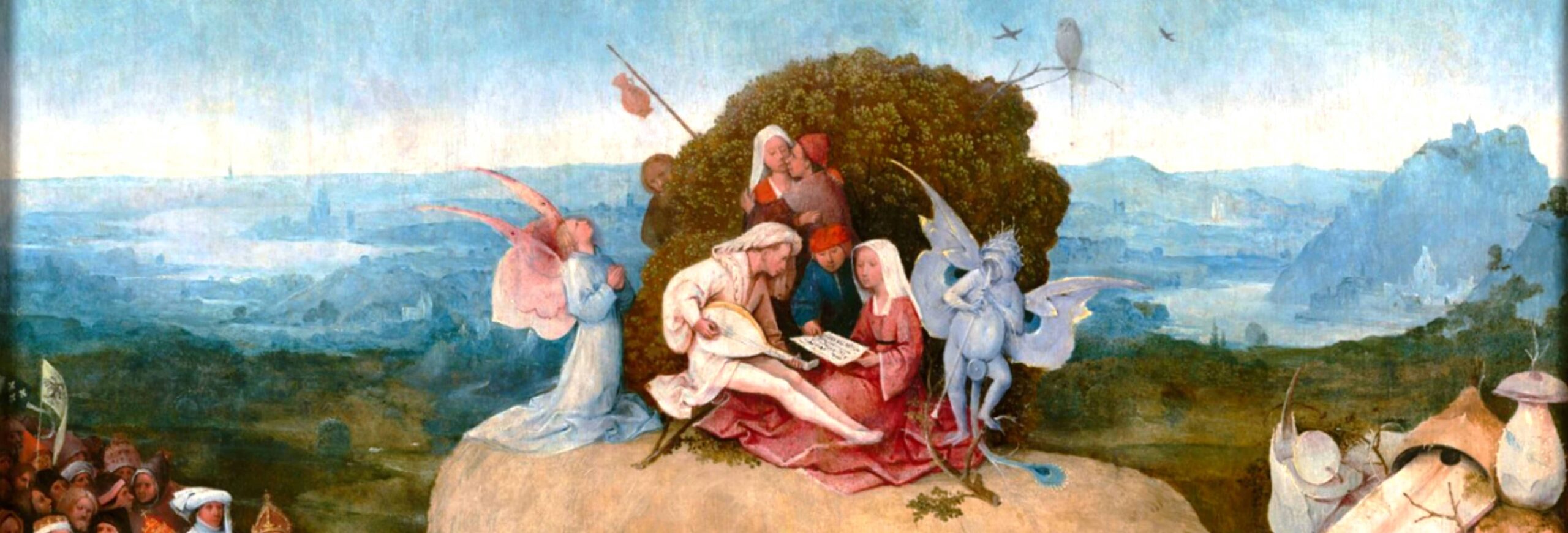
In the first article about York Minster, we spanned nearly 900 years of music iconography from circa 1030 to 1915, with an actual 11th century oliphant in the crypt, and carvings of a pipe and tabor, harps, trumpets, gitterns, lutes, nakers, violin, timbrel, and portative organ.

This second article is dedicated to one outstanding feature of York Minster, the pulpitum or Kings Screen, with 56 carvings of instruments from 1473–1500: shawms, bagpipes, trumpets, transverse flute, recorder, double recorder, lutes, bray harps, gitterns, rotas, fiddles, symphonie, tromba marina, portative organs, positive organ, clavicimbalum, cymbals, fool’s percussion, triangle, nakers, and singers.

This article therefore acts as a survey of instruments played in England in the last quarter of the 15th century, including some of the instruments lesser-known in the modern early music revival: the rota, the tromba marina, and the clavicimbalum.
Each carving of an instrument is photographed and described, accompanied by a video of each instrument playing music from the time.




